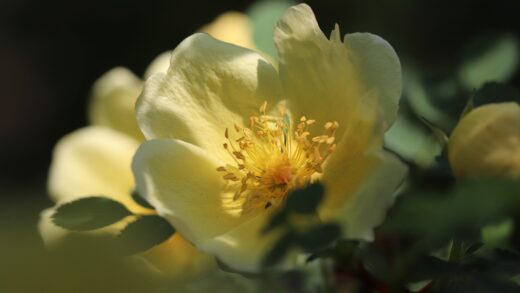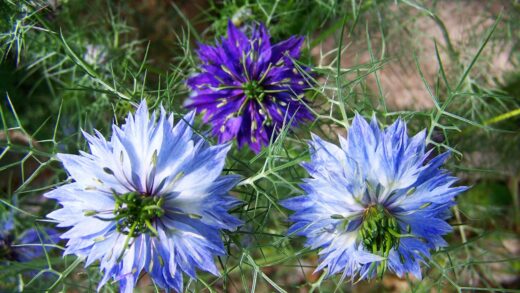Successfully establishing and expanding your collection of the Taiwanese toad lily begins with a solid understanding of its preferred planting conditions and its methods of reproduction. This captivating perennial, known for its unique, late-season blooms, thrives when its natural woodland habitat is emulated in the garden. Proper planting techniques ensure that the plant gets a strong start, developing a robust root system that will support vigorous growth and prolific flowering for years to come. Furthermore, learning how to propagate the Taiwanese toad lily allows you to easily multiply your stock, creating beautiful drifts of this exotic-looking flower or sharing its beauty with fellow gardening enthusiasts. This process, whether starting from a nursery plant or dividing an existing clump, is straightforward and immensely rewarding.
The first step in planting a Taiwanese toad lily is the careful selection of an appropriate site. This plant is a quintessential shade lover, flourishing in locations that receive dappled sunlight or partial shade, such as beneath the canopy of tall deciduous trees or on the north side of a structure. It is crucial to shield it from the harsh, direct afternoon sun, which can easily scorch its leaves and stress the plant. The ideal location provides bright, indirect light for most of the day with perhaps some gentle morning sun. Before you even dig the hole, observing the light patterns in your chosen spot throughout the day will pay dividends in the long-term health of your plant.
Once you have identified the perfect location, the focus shifts to preparing the soil to create a welcoming environment for the plant’s rhizomatous roots. Taiwanese toad lilies demand soil that is consistently moist but also well-draining, and rich in organic material. To achieve this, you should amend the native soil generously with compost, leaf mold, or well-rotted manure. Dig a hole that is at least twice as wide as the plant’s root ball but no deeper. Mix the excavated soil with your chosen organic matter at a ratio of roughly one part amendment to two parts native soil. This creates a friable, nutrient-rich medium that will retain moisture while allowing excess water to drain away, preventing root rot.
When you are ready to plant, carefully remove the toad lily from its nursery pot, gently teasing out any circling roots at the bottom of the root ball. Place the plant in the center of the prepared hole, ensuring that the crown of the plant—the point where the stems meet the roots—is level with or slightly above the surrounding soil surface. Planting too deeply can lead to crown rot, a serious issue for this species. Backfill the hole with the amended soil, gently firming it around the root ball to eliminate any large air pockets. Do not compact the soil too heavily, as this can impede root growth and water penetration.
After the toad lily is securely in the ground, the final and most critical step is to water it thoroughly. Provide a deep and slow soaking to settle the soil around the roots and ensure good root-to-soil contact. This initial watering is vital for hydrating the plant and helping it to recover from the stress of transplanting. For the first few weeks after planting, monitor the soil moisture carefully and water regularly to keep the soil consistently moist while the plant establishes its new root system. Applying a two-inch layer of organic mulch, such as shredded bark or composted leaves, around the base of the plant will help conserve moisture and suppress weeds.
More articles on this topic
Propagation by division
Propagation by division is the most common and reliable method for multiplying Taiwanese toad lilies. This process not only yields new plants but also helps to rejuvenate older, established clumps that may have become overcrowded or less vigorous over time. The best time to divide toad lilies is in the early spring, just as the new shoots, often called “noses,” are beginning to emerge from the ground. Dividing at this time minimizes stress on the plant, as the cool, moist spring weather provides ideal conditions for the new divisions to recover and establish themselves before the heat of summer arrives.
To begin the division process, you will need a sharp, clean spade or garden fork. Carefully dig around the entire perimeter of the clump you intend to divide, giving it a wide berth to avoid damaging the underground rhizomes. Once you have loosened the soil all the way around, gently lift the entire clump out of the ground. Place it on a tarp or a clear patch of ground where you can easily work. Shake off as much excess soil as possible so that you can clearly see the structure of the rhizomes and the points where new growth is emerging.
With the clump lifted and the soil removed, you can proceed to separate it into smaller sections. In many cases, you may be able to gently pull the rhizomes apart with your hands. For tougher, more congested clumps, you will need to use a sharp, sterilized knife or a spade to cut the rhizome mass into pieces. Ensure that each new division has at least two to three healthy growing points (shoots) and a good section of rhizome and attached roots. This ensures that each new plant has enough resources to successfully establish itself once replanted.
Once you have your new divisions, it is important to replant them as quickly as possible to prevent the roots from drying out. Plant them at the same depth they were previously growing, in soil that has been amended with organic matter. Water the newly planted divisions thoroughly to settle the soil and provide essential moisture. It is normal for the divisions to show little top growth for a few weeks as they focus their energy on developing a new root system. Keep them consistently watered throughout their first growing season, and by autumn, they should be well-established and may even produce a few flowers.
More articles on this topic
Propagation from seed
Growing Taiwanese toad lilies from seed is a more time-consuming and challenging process than division, but it can be a rewarding way to produce a large number of plants. The first step is to acquire fresh seeds. You can collect seeds from your own plants in the autumn after the seed pods have turned brown and started to split open. It is important to note that seeds from hybrid cultivars may not grow true to the parent plant, potentially resulting in variations in flower color or form. For the best results, use seeds from a reputable supplier or from species plants.
Taiwanese toad lily seeds require a period of cold, moist stratification to break their dormancy and trigger germination. This process mimics the natural winter conditions they would experience in their native habitat. You can achieve this by sowing the seeds in a pot or seed tray filled with a sterile seed-starting mix in the autumn. Cover the seeds very lightly with the mix, as they need some light to germinate. Place the pot outdoors in a protected location where it will be exposed to the cold and moisture of winter but shielded from heavy rain or hungry wildlife.
Germination will typically occur in the spring as the temperatures begin to warm up. Once the seedlings emerge, it is crucial to keep the growing medium consistently moist but not waterlogged. The tiny seedlings are delicate and can be susceptible to damping-off disease, so ensure good air circulation. As the seedlings grow and develop their first set of true leaves, they can be carefully pricked out and transplanted into individual small pots to continue growing. Use a high-quality potting mix and continue to provide bright, indirect light.
The seedlings will need to be nurtured in their pots for at least their first full growing season. Keep them well-watered and provide a weak, diluted liquid fertilizer every few weeks to encourage strong growth. It is unlikely that the plants will flower in their first year from seed. In the autumn, the young plants can be planted out into their permanent positions in the garden, or they can be overwintered in their pots in a cold frame or other protected location. With patience and proper care, your seed-grown Taiwanese toad lilies should reach flowering size within two to three years.
Choosing the right time for planting
The timing of planting is a critical factor for the successful establishment of Taiwanese toad lilies. The ideal time to plant nursery-grown plants or to transplant divisions is in the early spring. Planting at this time allows the toad lily to take full advantage of the entire growing season to develop a robust root system before it has to face the stresses of summer heat or winter cold. The cool temperatures and reliable moisture of spring provide the perfect environment for the plant to recover from the transplant shock and begin its new life in your garden.
While spring is optimal, planting in the early autumn is another viable option, particularly in regions with mild winters. Autumn planting should be done at least six to eight weeks before the first hard frost is expected. This window gives the plant enough time to establish some new root growth before the ground freezes and it enters dormancy. The advantage of autumn planting is that the soil is still warm from the summer, which can encourage faster root development, and the plant will be ready to burst into growth as soon as spring arrives. However, spring planting remains the safer and more recommended option for most climates.
Summer is generally considered the most challenging time to plant Taiwanese toad lilies. The combination of high temperatures and potentially dry conditions puts significant stress on a newly planted perennial. If you must plant in the summer, be prepared to provide extra care. Choose a cool, overcast day for planting, and be absolutely diligent about watering, ensuring the soil around the new plant never dries out. Providing temporary shade from the afternoon sun for the first couple of weeks can also help the plant to acclimate and reduce transplant shock.
Regardless of the season you choose for planting, the immediate aftercare is crucial. Always water the plant thoroughly immediately after planting to settle the soil and eliminate air pockets around the roots. For the first season, whether planted in spring or autumn, your new toad lily will be more vulnerable to drought than an established plant. Monitor the soil moisture regularly and provide supplemental water whenever the top inch of soil becomes dry. This consistent care during the establishment phase will set the stage for a healthy and floriferous plant in the years to come.
Spacing and companion planting
Proper spacing is essential for the health and aesthetic appeal of Taiwanese toad lilies. These plants typically grow to a height of about two to three feet and will form a clump that can spread to about two feet wide over several years. To ensure good air circulation, which helps to prevent fungal diseases, it is recommended to space individual plants approximately 18 to 24 inches apart. This spacing may look sparse initially, but it allows the plants to grow to their mature size without being overcrowded, creating a more natural and graceful appearance in the garden bed.
When considering companion plants for Taiwanese toad lilies, it is best to choose other species that thrive in similar woodland conditions. Look for plants that appreciate partial to full shade and consistently moist, humus-rich soil. Excellent companions include ferns, such as the Japanese painted fern (Athyrium niponicum ‘Pictum’) or the lady fern (Athyrium filix-femina), which provide contrasting feathery textures. Hostas are another classic choice, with their bold foliage in various shades of green, blue, and variegation, creating a beautiful tapestry of leaves throughout the season.
To create a multi-layered and season-long display, combine Taiwanese toad lilies with other shade-loving perennials that have different bloom times. For spring interest, consider planting them alongside early bloomers like brunnera (Brunnera macrophylla), with its delicate blue flowers, or bleeding heart (Dicentra spectabilis). For mid-season color, astilbes, with their feathery plumes, and coral bells (Heuchera), valued for their colorful foliage, make wonderful partners. This approach ensures that the garden remains dynamic and visually engaging from spring until the toad lilies take center stage in the autumn.
It is also important to consider the growth habits of companion plants. Avoid planting Taiwanese toad lilies next to aggressive, fast-spreading ground covers that could overwhelm them and compete for moisture and nutrients. Instead, opt for well-behaved, clump-forming perennials. Plants like Solomon’s seal (Polygonatum), with its gracefully arching stems, or lungwort (Pulmonaria), with its attractive silver-spotted leaves and early spring flowers, coexist peacefully with toad lilies, contributing to a harmonious and balanced woodland garden design.


















